Stephen Green’s storybook photography career goes beyond baseball
High in a luxury stadium box, Cleveland’s basketball superstar LeBron James went crazy on national television, celebrating. Cleveland Indians’ Rajai Davis
• July 2017 issue
High in a luxury stadium box, Cleveland’s basketball superstar LeBron James went crazy on national television, celebrating. Cleveland Indians’ Rajai Davis had just hit a three-run homer off the Chicago Cubs’ hitherto unhittable closer Aroldis Chapman. It was the eighth inning of the deciding game seven of Major League Baseball’s 2016 World Series, and it tied a game the Cubs had been leading since the first inning.
Down in the photographers’ pit adjoining the Cubs’ dugout, veteran baseball photographer Brad Mangin turned to his friend Stephen Green, a lifelong Cubs fan and the team’s official photographer since 1982. “Are you all right?” Mangin asked. “I said, ‘Yeah, this is 34 years of Cubs moments. That’s my history right there,’” Green recalls, personally bearing—like so many Cubs devotees—the team’s 108 years of infamous futility.
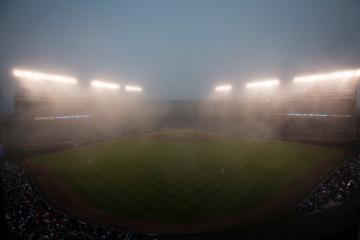
The game wasn’t over, though, and Green still had to work. Then came the rain delay.
Being the official photographer for a professional sports team might seem like the be-all and end-all job. For Green, it launched a professional photography career that has included photographing music concerts, corporate events, weddings, and The Oprah Winfrey Show.
“I had this tailwind of credibility working for the Cubs,” he says. “People returned my phone calls. Then I started working for Oprah, and that was the one-two punch.” In turn, working for the Cubs and Oprah gave Green the skills and attitude to create dynamic images of corporate sales meetings and conventions.
Fairy tale start
Though fairy tale endings have long evaded Cubs fans, Green’s career with the club had a fairy tale beginning. Growing up in Chicago, Green often attended Cubs games at Wrigley Field and visited the Art Institute of Chicago. He soaked in Turner, Constable, and Monet paintings as well as Ansel Adams photographs. “I’d seek as much influence as I could just to get it into my consciousness,” he says. After earning a degree in art history at The Evergreen State College in Washington, he pursued an MFA at the Art Institute and started on a photo thesis on Wrigley Field, one of the oldest ballparks in America and, in 1982, the last Major League stadium playing all its games in daylight. The ball club gave him permission and full access to the team as well as the stadium, but the Institute didn’t give him a scholarship, and he couldn’t afford the tuition. Living with his parents, taking a night job as a waiter, and obtaining a grant from the Illinois Arts Council gave him the financial means to do the photographic documentary of Wrigley. After the season, the team photographer retired and Green was offered the job.

Green wasn’t a sports or corporate photographer, though: street scenes and fine art were his forte. He contacted other photographers and asked to be a second assistant. That exposed him to food and industrial assignments. “I wasn’t interested in that, but I learned strobes and lighting and the business of photography and networking.”
As official team photographer, Green controls credentials for photographers covering Cubs games. In 1984, Chicago got within one game of the World Series. “We were everybody’s story,” Green says. “That got me in the pipelines with photo editors, which I never would have gotten if the Cubs didn’t put me in front of them.” Not only did he meet many of the best sports photographers, he picked their brains for advice on shooting action. “Some of those great Sports Illustrated and National Geographic guys who came through were really helpful, showing me what to look for, how to anticipate,” Green says. “The most talented are the most giving; they are unthreatened, and they want you to get it right.”
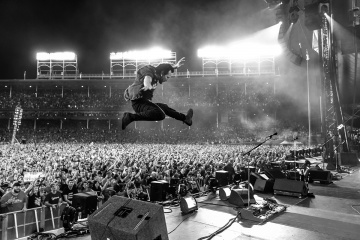
Meanwhile, Green established himself in the Chicago blues and jazz scene by approaching Alligator Records and offering to provide publicity photos in exchange for full access during shows. He’s since published two books on blues music. Another Chicago photographer, Paul Natkin, was tapped to cover the Rolling Stones world tour in 1989, and Natkin asked Green to fill in for him on his regular gig, “The Oprah Winfrey Show.” When Natkin decided not to return, Green worked for Winfrey another seven years, shooting her live shows in the morning before heading to the ballpark. When Winfrey began taping two shows a day, Green had to give her up to keep the Cubs. All along he’s leaned on Canon Professional Services for instruction, equipment, and networking. “They worked with me to figure out how to shoot on set at Oprah, how to light with Speedlites and expose better for my two blues documentary books, and help network with other professional sports photographers when I first started shooting action,” he says.
In position
All this education forms the foundation of Green’s simple creed: You create your own luck. “You’ve got to put yourself in position for something to happen,” he says. “You have to anticipate, look at the light, see what’s happening, pre-visualize the picture.” This applies to positioning himself for a pitcher’s mound celebration after a home win in the top of the ninth (behind home plate), a walk-off celebration after a home win in the bottom of the ninth (third base line), or a lakeside weather pattern forming a painters sky over the stadium (upper deck). With the Cubs as heavy favorites last year to win the championship, Green convinced the team to let him hire additional photographers for each game of the playoffs.
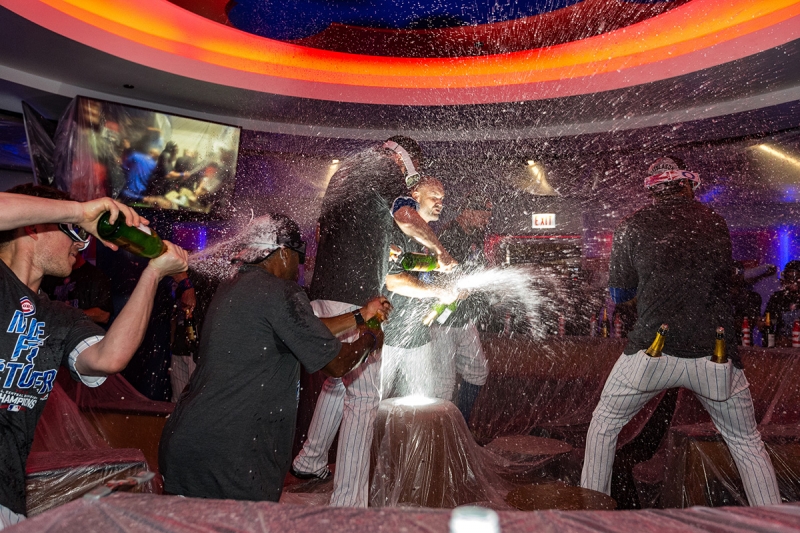
Similarly, for “The Oprah Winfrey Show” Green learned what images the consumer media prefers, positioned himself for angles and expressions Winfrey prefers, paid attention to studio lights and which camera was active, and read the show’s script. “You kind of know ahead of time what’s coming, but Oprah would go off in her own world,” he says. He also dressed in dark clothes: Green wants to be invisible when covering an event. When working corporate events, he meets with organizers ahead of time and sits in on pre-production meetings, learning not just itinerary and stage setup but the speakers’ quirks and gestures. “Often it’s difficult to work with people hiring you because they’re not visual people, so it’s more me questioning them.” And coordinating. “It’s giving a lot of respect to the guys who put the show on, that I understand what went into the show and I don’t want to get in the way, but I also need to get this picture,” Green says. “Inevitably, somebody in this group is a real sports fan,” giving Green more clout with his Cubs cred.
Though the majority of his work is game action and often appears in Sports Illustrated, Green’s role for the Cubs is corporate photographer. He does organization portraits, pre-game ceremonies, marketing assignments, and environmental images of Wrigley Field. Over the season, team marketers give Green lists of images needed for programs, magazines, and sales literature, and he serves the players’ photographic requests, too. The job fits his fine arts interests—using Wrigley and the game of baseball as his canvas—and aesthetic yearnings.
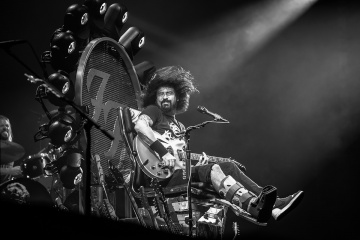
Inside the event
“I like to be part of the world, not just on assignment from AP,” he says. “Being on the inside, you build a trust with clients and they know you have their interest at heart.” At concerts he photographs the playlist, the roadie tuning the guitar, the seven guitars lined up, the battered drumsticks, the band in the green room and, from the stage, the audience reacting. Corporate meeting images include water bottles on tables, the conference itinerary, signage, and, from behind the speaker, the audience reacting. With the Cubs, “the depth to me is the dugout, the camaraderie, the fan reaction, the place, the scene,” he says. “There’s the performance, that’s why we’re there; but I want to show what it’s like to be the guy in the band or the player. Same with shooting a wedding: those images are as important 20 or 30 years from now as walking down the aisle.”
Green shared a photography business with his wife, Lisa, daughter of a photographer who took up the profession herself to share more time with her husband. She ran a portrait studio, and the two worked weddings when he didn’t have Cubs duties. They met at a Cubs game when she accompanied her grandmother, who was being honored by the team. Green, of course, photographed the presentation and noticed her in the stands, but it wasn’t until a rain delay that he went into the stadium concourse and ended up meeting Lisa.
That was the first eventful rain delay in Green’s life.
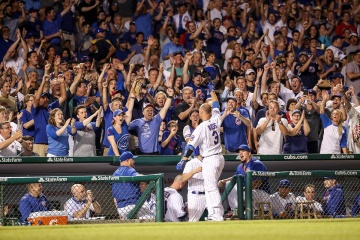
After neither team scored in the ninth inning of the 2016 World Series Game Seven, a rainstorm halted play for 17 minutes. Green hopped out of the photographer’s well and into the Cubs dugout, capturing images of a shell-shocked Aroldis Chapman sitting alone on the bench. He headed for the clubhouse but stopped when he saw the players walking into a weight room. Staff members, however, were walking out. “This is where you have to know when it’s OK to be there and not OK,” Green says. “I got it, this is players only. I really wanted to be in there, but I knew. That’s a line you can’t cross.” Green went back to the dugout, and at the end of the delay, the players emerged “all pumped,” he says, with him now in the middle of it. “They’re used to me; they don’t even see me anymore.” He returned to the camera well, where he watched the Cubs score two runs in the top of the tenth inning. Cleveland closed to one in the bottom of the inning, but the Cubs got the last out, winning the Series.
For a change, Green wasn’t entirely ready. He jumped onto the field—his privilege as team photographer—but wasn’t sure where to shoot. “I knew I had three other guys shooting, and they were in the right position. I knew that my angle was not the picture, so I let that go.”
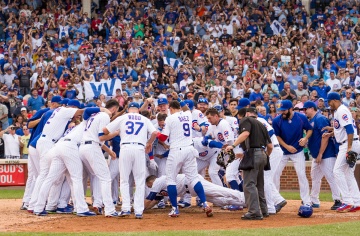
Then he paused. Colleagues who had covered other championships had counseled him to take time to fully appreciate such moments. “The whole [playoffs] I was inside the event—I was on the team plane, in the locker room, in the hotel, on the bus, on the field with the team. I didn’t have perspective of how large it was, the scope on a worldwide level of the Cubs winning.” Now, his long-suffering team world champions, he stopped and looked around.
“I took a breath and said, ‘Wow!’ [Cubs Manager Joe] Madden came over to me and said, ‘Yeah?’ I said, ‘Yeah.’”
RELATED: See a gallery of Stephen Green's photos.
Eric Minton is a writer and editor in Washington, D.C.

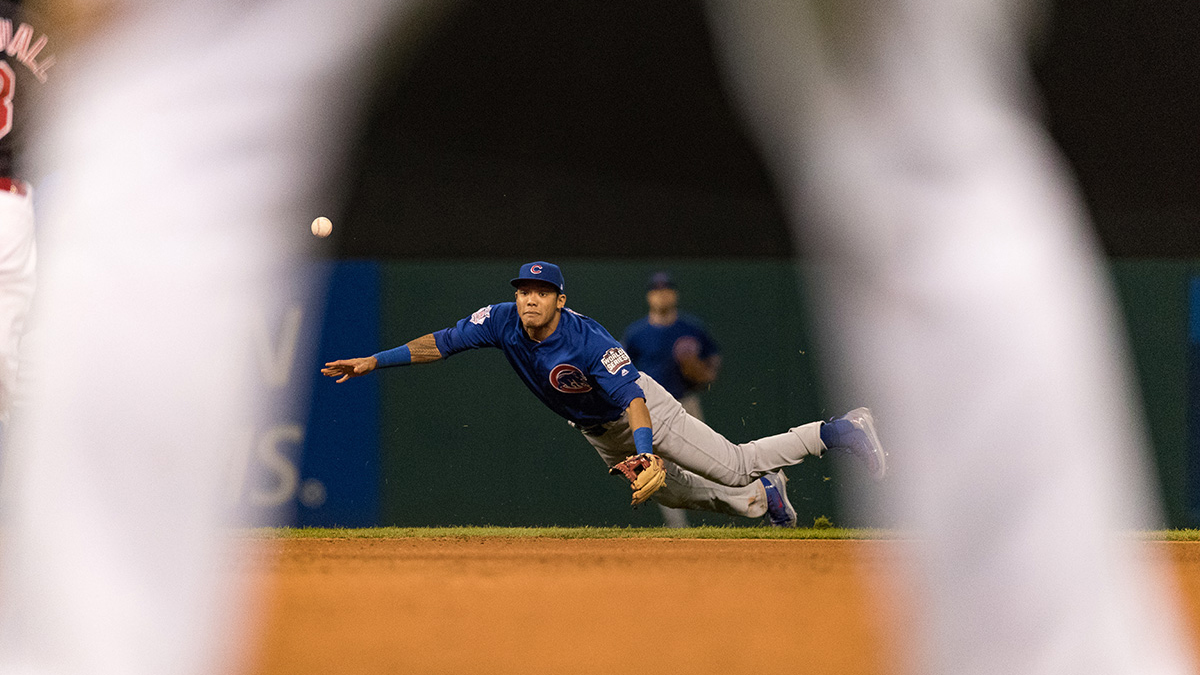
 View Gallery
View Gallery

